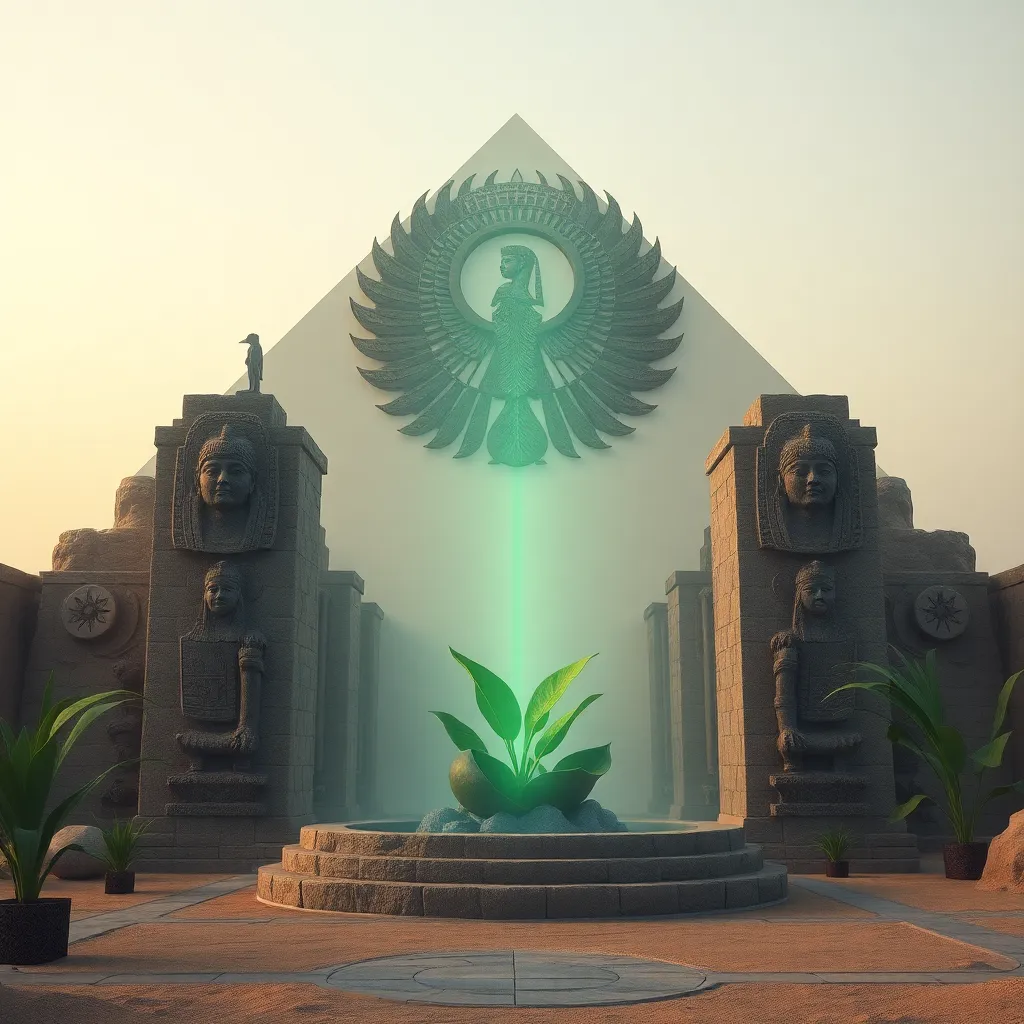The Importance of Sacred Plants in Egyptian Spirituality
1. Introduction
In ancient Egyptian culture, plants were not merely components of the natural world; they held profound spiritual significance. The ancient Egyptians viewed the world around them as imbued with divine presence, leading to a deep reverence for nature. Among the elements of nature, plants were particularly venerated, often associated with various deities and spiritual practices. This article explores the sacredness of plants in Egyptian spirituality, delving into their historical context, roles in rituals, and their enduring legacy.
2. Historical Context of Sacred Plants
Ancient Egyptian beliefs were intricately connected to the natural environment, with a pantheon of gods and goddesses embodying various aspects of nature. The Egyptians believed that the gods influenced the growth and decay of plants, making them central to both agriculture and spirituality. Plants were not only vital for sustenance but also served symbolic roles in religious practices.
Daily life for the ancient Egyptians was intertwined with the cultivation and use of plants. Agriculture was the backbone of their economy, relying heavily on the fertile banks of the Nile River. This reliance fostered a deep appreciation for the flora surrounding them, leading to the elevation of certain plants to sacred status.
3. Key Sacred Plants in Egyptian Spirituality
Several plants were particularly significant in Egyptian spirituality, each carrying unique symbolic meanings:
- Lotus (Nymphaea caerulea): Often associated with the sun and creation, the lotus symbolized rebirth and renewal. It was commonly depicted in art and was linked to the sun god Ra.
- Papyrus (Cyperus papyrus): This plant was essential for making paper and was also sacred to the goddess Ma’at, representing truth and order. Papyrus was often used in religious texts and documents.
- Acacia (Acacia nilotica): Regarded as a symbol of immortality, acacia was linked to the afterlife and was believed to be the wood used in the construction of coffins. It was also associated with the goddess Isis.
These plants were more than resources; they were embodiments of divine principles, each intertwined with the mythology and beliefs of the ancient Egyptians.
4. The Role of Sacred Plants in Religious Rituals
Sacred plants played a vital role in various religious rituals and ceremonies. They were often used in offerings, incense, and other sacred practices. For example:
- Incense: Frankincense and myrrh, derived from trees and plants, were used extensively in religious ceremonies. Their fragrant smoke was believed to carry prayers to the gods.
- Offerings: Lotus flowers, along with fruits and grains, were commonly presented as offerings to the gods during rituals, symbolizing gratitude and reverence.
These practices underscored the belief that plants could facilitate communication with the divine, serving as intermediaries between the earthly and the spiritual realms.
5. Sacred Plants and Healing Practices
In addition to their spiritual significance, sacred plants were integral to ancient Egyptian medicine. The Egyptians possessed extensive knowledge of herbal remedies and used various plants for their healing properties. Some notable practices included:
- Lotus: Used in remedies for both physical and spiritual ailments, the lotus was believed to have calming effects.
- Papyrus: Besides its utilitarian uses, the papyrus plant was employed in wound healing and as a source of medicinal preparations.
- Acacia: Its bark was used in various treatments, including as astringents and in ointments.
The connection between spirituality and healing through botanical means illustrates how deeply embedded plants were in the holistic view of health in ancient Egyptian society.
6. Symbolism and Art: Sacred Plants in Egyptian Iconography
Sacred plants were prominently featured in ancient Egyptian art and architecture. They not only decorated temples and tombs but also conveyed deeper symbolic meanings. The representation of plants in art served several purposes:
- Symbol of Life: The lotus often adorned the walls of temples and tombs, symbolizing life and resurrection.
- Divine Connection: Papyrus motifs were frequently used in royal and divine iconography, establishing a connection between the rulers and the gods.
- Mortuary Context: Acacia trees were depicted in funerary art, reinforcing beliefs in the afterlife and the immortality of the soul.
By embedding sacred plants within their art, the ancient Egyptians reinforced their beliefs and values, creating a lasting legacy that continues to resonate today.
7. The Legacy of Sacred Plants in Modern Egyptian Spirituality
The reverence for sacred plants has not diminished in contemporary Egyptian spirituality. Many modern practices draw inspiration from ancient traditions, with a resurgence of interest in the traditional uses of plants in both religious and healing contexts. Some examples include:
- Herbal Medicine: Many Egyptians still utilize herbal remedies rooted in ancient practices, valuing the healing properties of plants.
- Spiritual Ceremonies: Modern spiritual rituals often incorporate traditional plants, maintaining the connection to their ancestral heritage.
This continuity highlights how ancient Egyptian spirituality continues to influence contemporary beliefs and practices, showcasing the enduring significance of sacred plants.
8. Conclusion
The importance of sacred plants in ancient Egyptian spirituality cannot be overstated. From their roles in daily life to their profound symbolic meanings in religious rituals, plants were integral to the Egyptians’ understanding of the world around them. The legacy of these sacred plants persists, influencing modern Egyptian spirituality and offering insights into the cultural heritage of this ancient civilization. As we explore the significance of these plants, we gain a deeper appreciation for the interconnectedness of nature, spirituality, and human experience in ancient Egypt.




